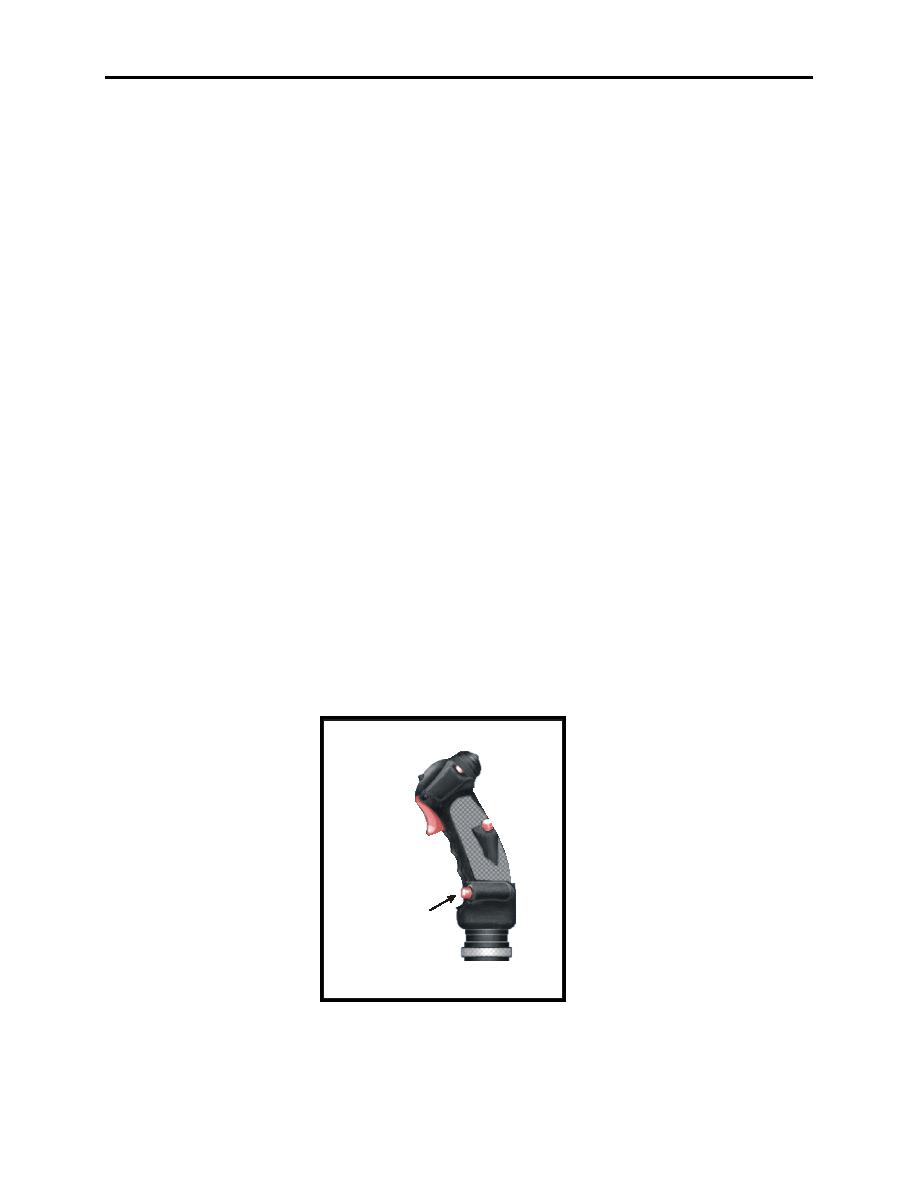 |
|||
|
|
|||
|
Page Title:
Figure 4-5 Nose Wheel Steering Button |
|
||
| ||||||||||
|
|  CHAPTER FOUR
T-6A CONTACT
408.
TAXIING
Once the aircraft is running and all applicable checks are complete, we must safely taxi the
aircraft from its starting point on the airfield to, eventually, an active runway for takeoff. You
should build the habit of always taxiing with the airfield diagram at your disposal (on your
kneeboard, etc). Have a taxi plan and know exactly where you are going before leaving the
chocks. This becomes even more important later in the program as you begin to conduct training
off-station (other than home field). Build good habits now.
Taxiways have a narrow yellow line painted down the middle. Taxi with the nose wheel on this
line. This ensures a safe taxi clearance from fixed objects, such as parked airplanes and
buildings. However, the aircrew is solely responsible for obstruction clearance. A general rule
of thumb is to taxi no faster than a person can walk when within the line area and no faster than a
trot when outside the line area.
Taxiing in the T-6A uses power generated by the propeller, although not more than idle is
normally needed. Speed is controlled with the brakes; power above idle may be required when
initiating the taxi motion, traveling uphill, during sharp turns, etc. Directional control during taxi
is accomplished by using the rudder pedals to manipulate the aircraft nose wheel steering (NWS)
system, or by use of the rudder and/or differential braking. Keep your left hand on the PCL; keep
your right hand on the control stick, facilitating ready access to the NWS button. Attempt to
keep the ailerons deflected into the wind during taxi.
Utilized as the normal method to directionally control the T-6A, NWS is actuated by a button on
the control stick (Figure 4-5) and verified by a green "NWS" light on the left side of the
instrument panel. With NWS on, the rudder pedals control the castoring of the nose wheel up to
12 either side of center. For turns requiring greater than 12 of nose-wheel castor, NWS must
be disengaged and rudder and differential braking used to turn the aircraft.
Nose Wheel
Steering
Figure 4-5 Nose Wheel Steering Button
4-8
GROUND PROCEDURES
|
|
Privacy Statement - Press Release - Copyright Information. - Contact Us |